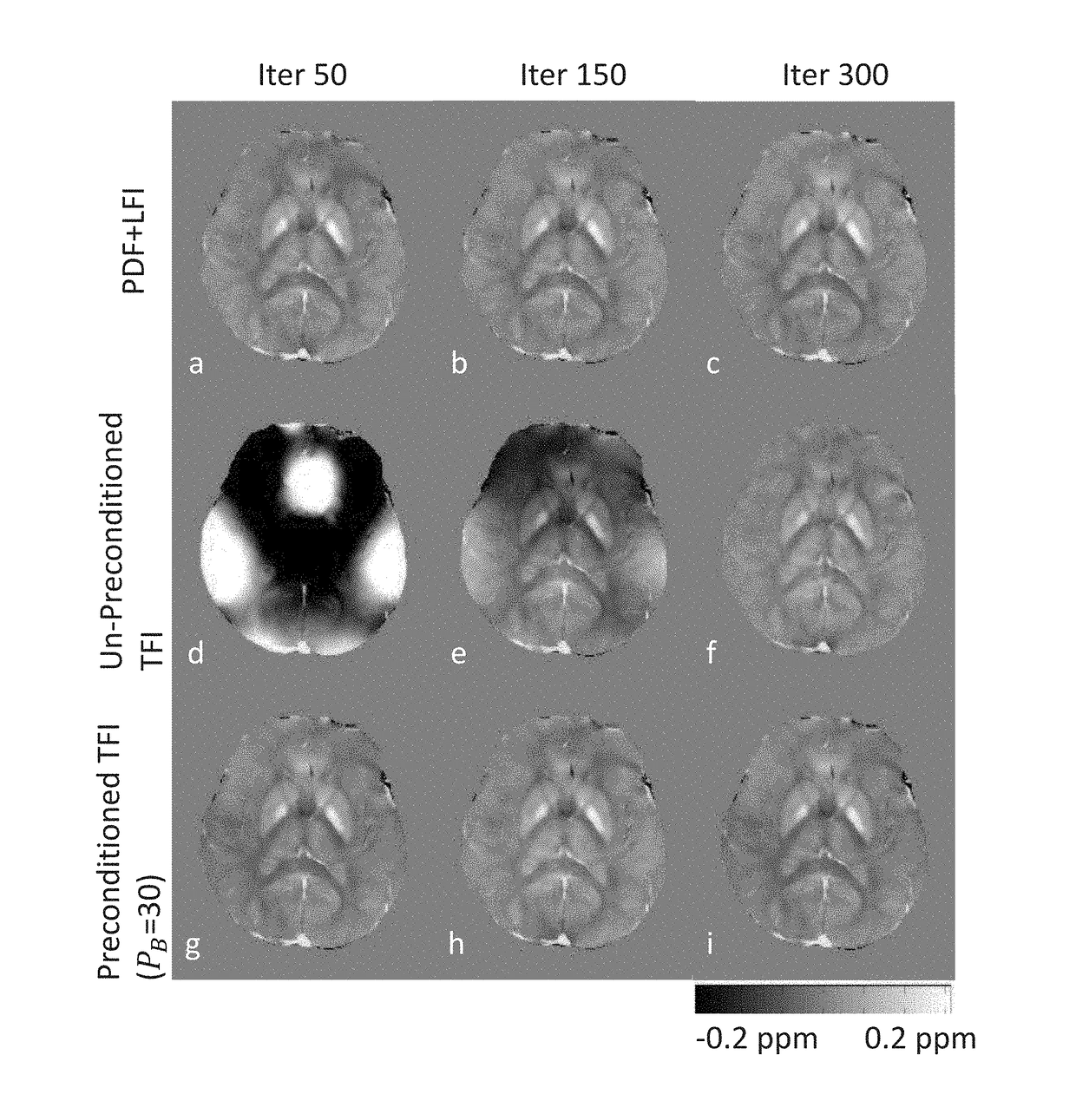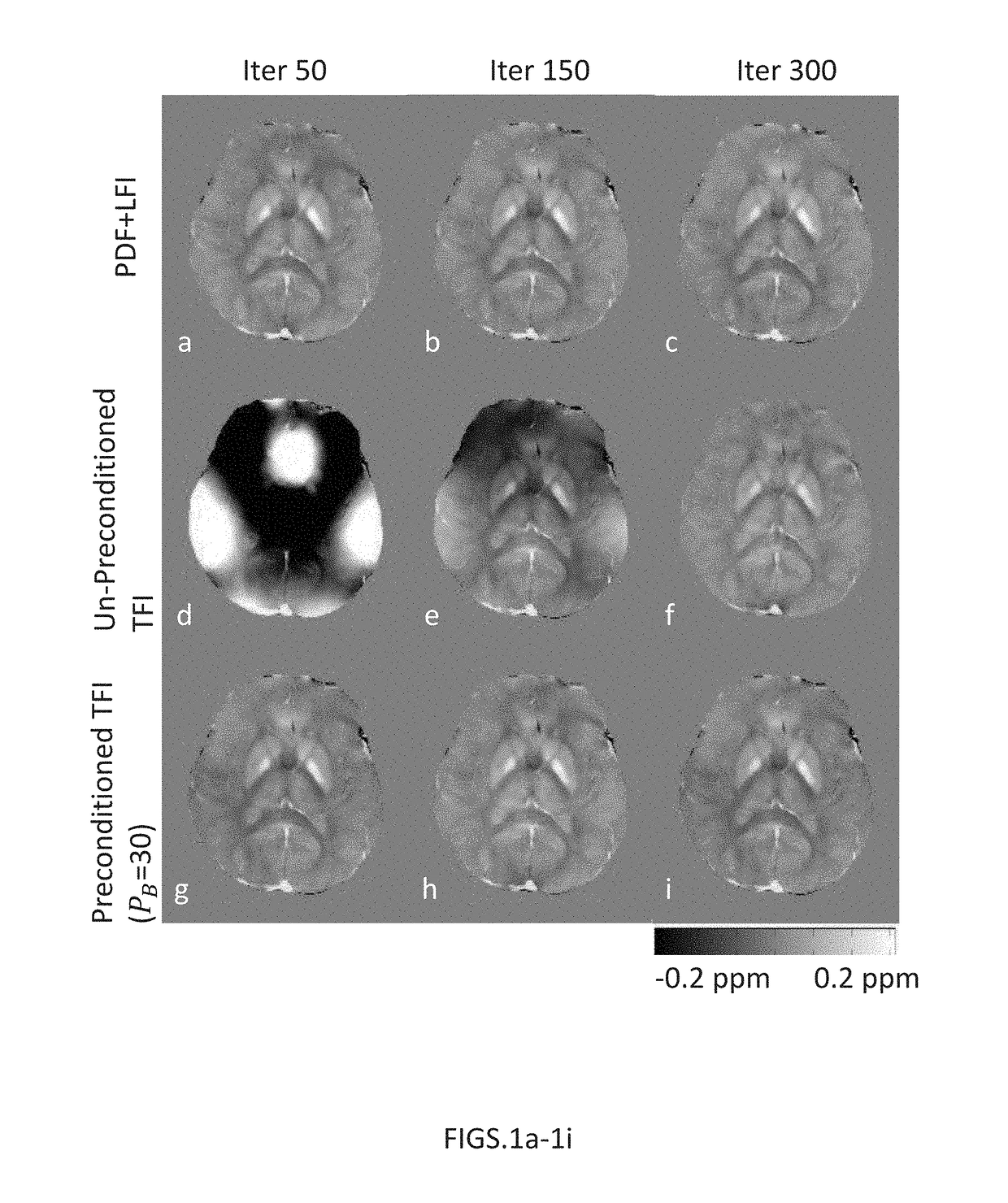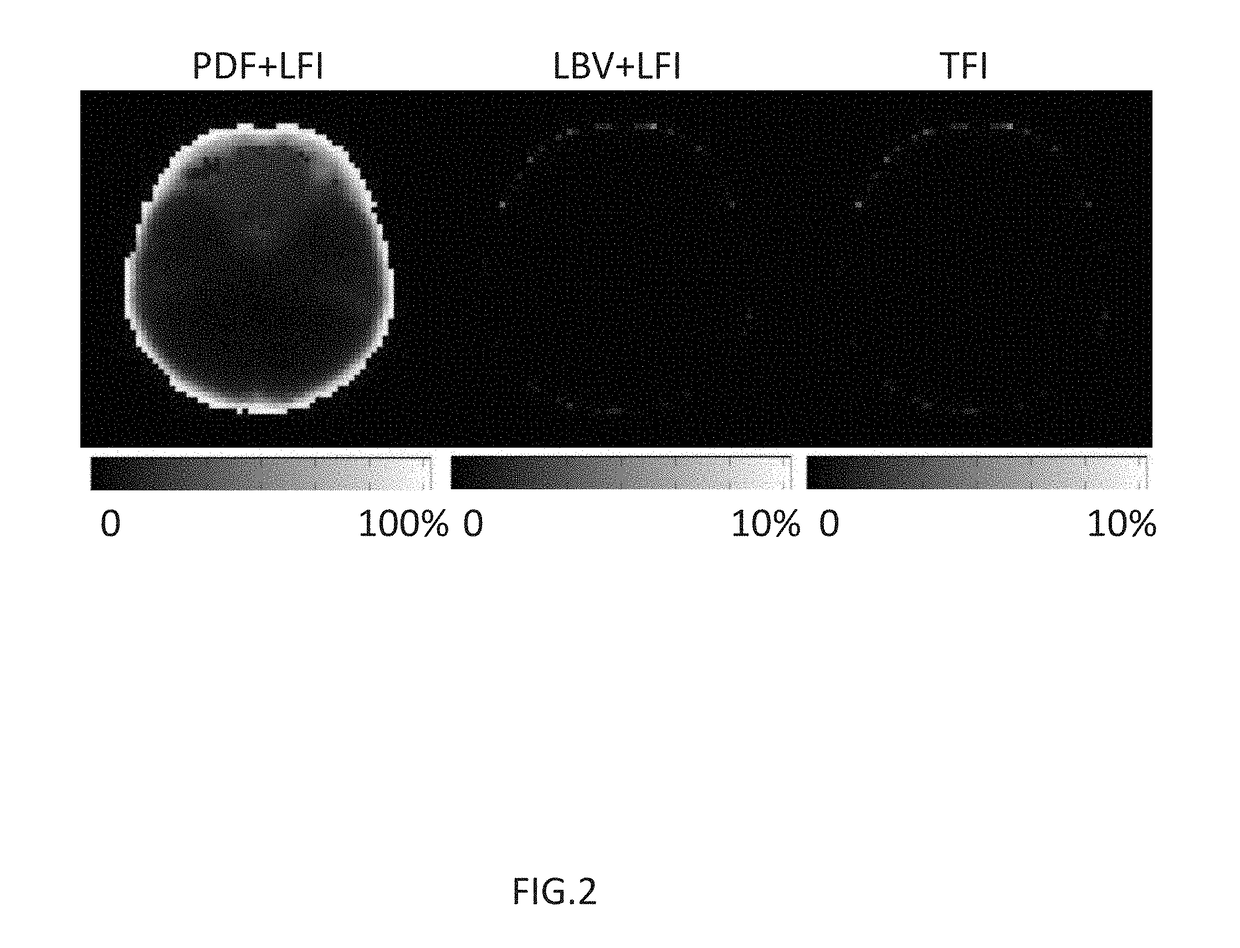System and method of robust quantitative susceptibility mapping
a quantitative susceptibility and mapping technology, applied in the field of magnetic resonance imaging, can solve the problems of not allowing reliable interpretation, state of the art methods for removing or compensating background field generally produce edge errors, and no reliable signals from lung in gre images, so as to improve the accuracy of any resulting medical diagnosis, improve the user's understanding of the structure of the subject, and improve the quality of the resul
- Summary
- Abstract
- Description
- Claims
- Application Information
AI Technical Summary
Benefits of technology
Problems solved by technology
Method used
Image
Examples
Embodiment Construction
[0062]Implementations of systems and methods for collecting and processing MRI signals of a subject, and reconstructing maps of physical properties intrinsic to the subject (e.g., magnetic susceptibility) are described below. Some of the disclosed implementations overcome limitations in quantitative susceptibility mapping (QSM), where the computation speed and accuracy and the Bayesian prior information affect QSM image quality and practical usage. In some implementations, to reconstruct maps of a subject's magnetic susceptibility, the iterative computation process of finding the susceptibility distribution that optimally fit available field data and tissue structure prior information is accelerated using preconditioning and primal dual optimization method and is computed more accurately using primal dual optimization method. In some implementations, the tissue structure prior information in a Bayesian method for estimating susceptibility is improved using anisotropic edge weighting...
PUM
 Login to View More
Login to View More Abstract
Description
Claims
Application Information
 Login to View More
Login to View More - R&D
- Intellectual Property
- Life Sciences
- Materials
- Tech Scout
- Unparalleled Data Quality
- Higher Quality Content
- 60% Fewer Hallucinations
Browse by: Latest US Patents, China's latest patents, Technical Efficacy Thesaurus, Application Domain, Technology Topic, Popular Technical Reports.
© 2025 PatSnap. All rights reserved.Legal|Privacy policy|Modern Slavery Act Transparency Statement|Sitemap|About US| Contact US: help@patsnap.com



